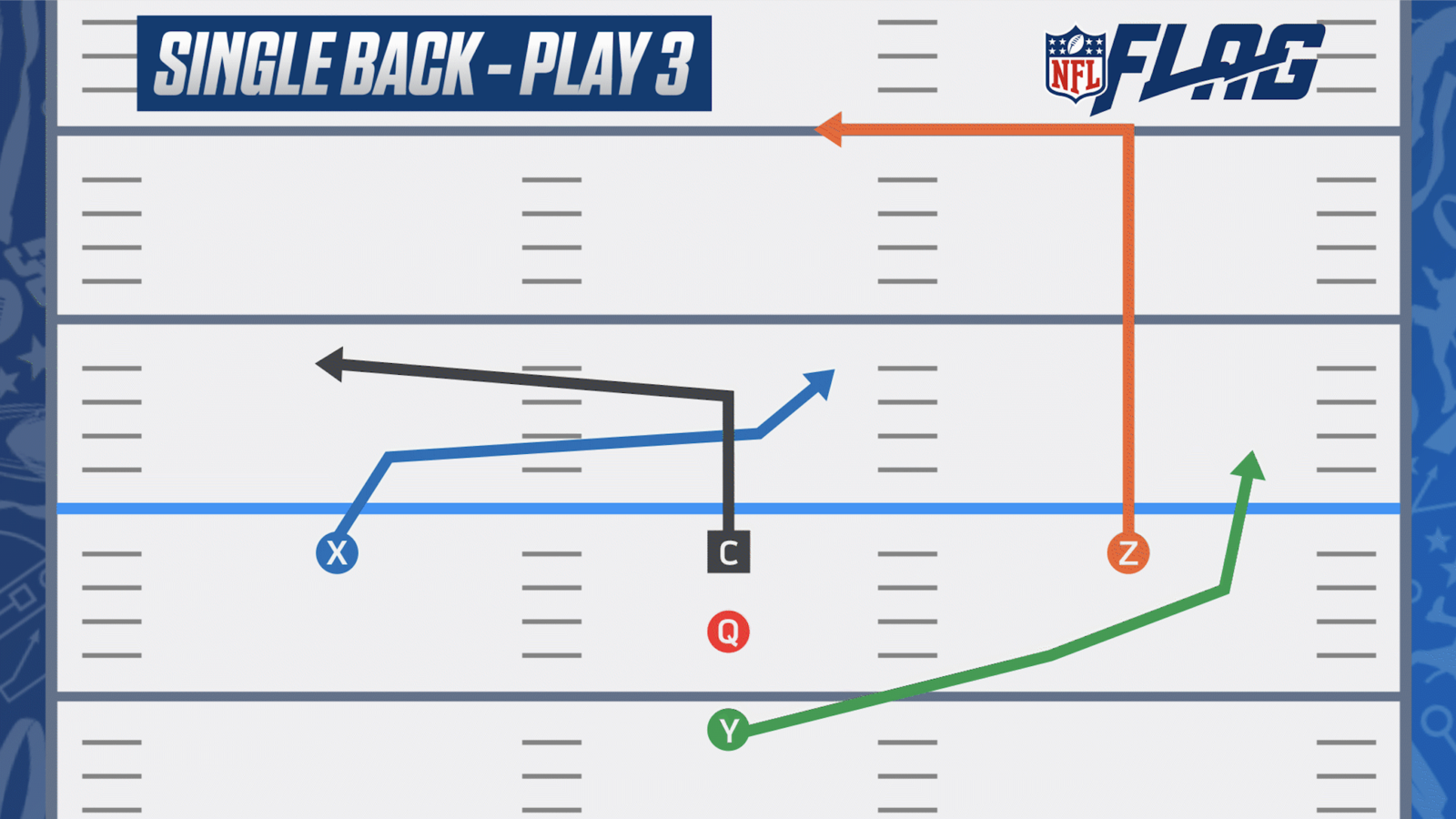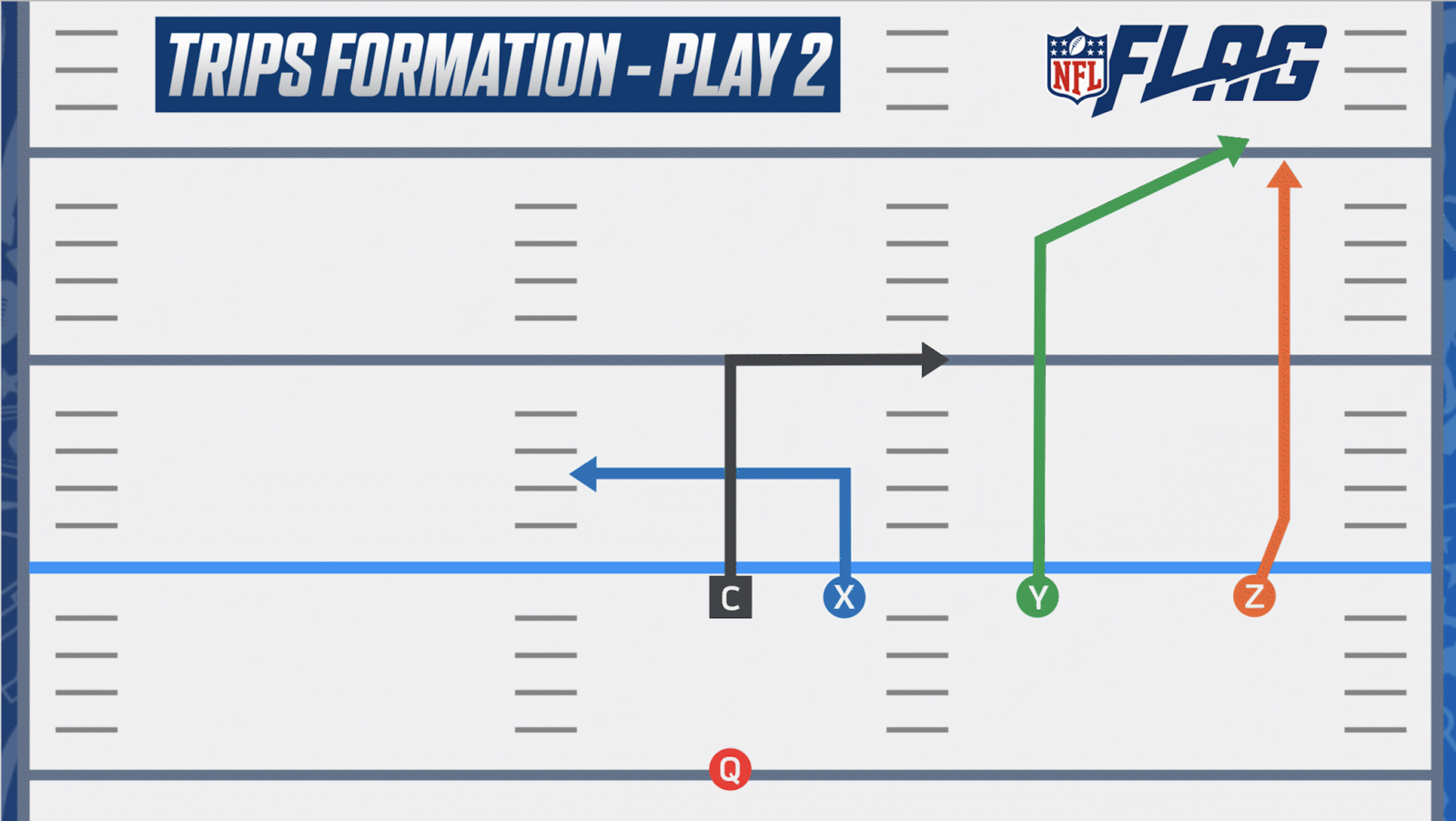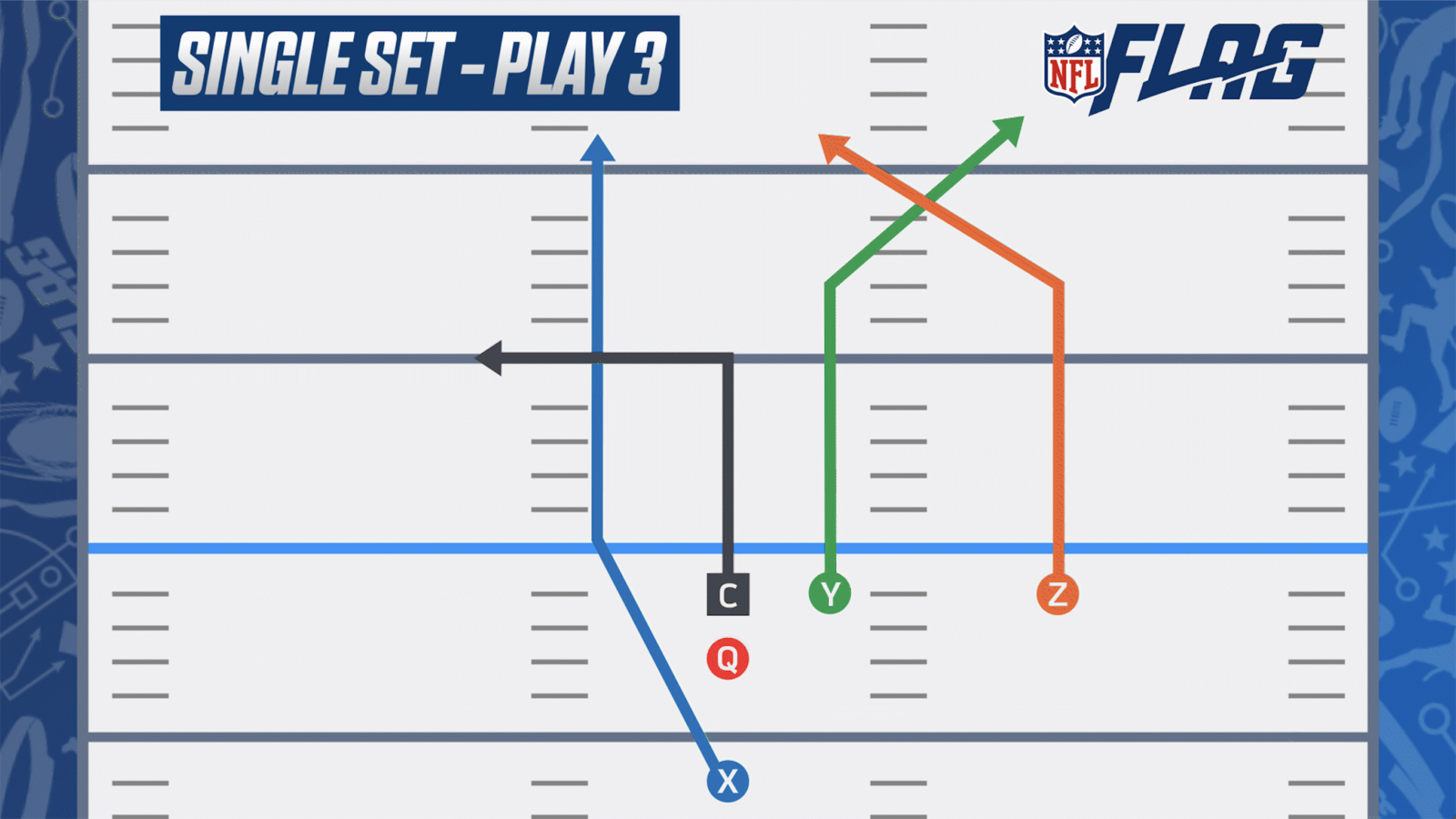Traditional NFL Youth flag football leagues participate in 5 on 5 play. On offense, this typically consists of:
- One quarterback: This player is given the ball at the start of the play and aims to throw the ball to an open receiver or the center. Because there are no linemen, you’ll find most 5 on 5 teams pass most of the time.
- One center: The center hands or passes the ball to the quarterback to start the play, then can then either guard the quarterback to allow more time for the quarterback to throw the ball, or release and run a route, similar to a receiver.
- Three receivers: These players run designated routes to open themselves up for a pass from the quarterback.
For each offensive play, the individual players line up on the offensive side of the line of scrimmage. On a pass play, typically, the receivers all run a pass route. The combination of each of these routes make up a play. Mixing and matching the nine different route types and field positions allows for hundreds of unique plays. However, it is highly recommended that your team prepare a shortlist of preferred flag football plays ahead of the game. This will allow for quicker decisions in between downs and less confusion on the field.

Single-Back Criss-Cross: In this play, two receivers (X and Z) line up on the line of scrimmage, one on each side of the center. An additional receiver (Y) lines up a couple yards behind the quarterback.
At the snap, the center and the X receiver run slants in opposite directions, slightly staggered. (Because the player playing center is in the center of the field, there is no in or out side.) The center runs his slant to the left, toward the other slant. This disrupts their respective defenders, opening them up for quick yardage.
The Z receiver (on the right side) runs an in route (opposite of an out route), at about 10 yards. It’s recommended to throw to this receiver if a first down is needed or the receiver is wide open.
Lastly, the receiver stacked behind the quarterback runs toward the outside of the field and up the field behind the Z receiver's in route. Because this receiver is stacked behind the line of scrimmage, it allows more time for the player to get open before being met by a defender.

Trips Right: Notice that one side of the field has a defensive blindspot? It’s time to break out the triple, or ‘trips,’ formations. Trips plays can be used on either side of the quarterback and are designed to expose defensive weaknesses and cause confusion, making it one of the best youth flag football formations to unleash.
For this play, we will line up the three receivers on the right side of the quarterback.
The receiver Z, starting farthest right, does a slight slant toward the outside and then flies up the field, spreading out the defensive backfield. Meanwhile, the middle receiver, Y, performs a corner to further draw the defense the right side of the field.
The inside receiver, X, and center then do a crossing in and out, twisting up the remaining defensive players. Because of the misdirection of these two players, often one of them will remain open for some short, quick yardage while the defense readjusts.

Single-Set Right Cross: Are you down by five with only 15 seconds left on the clock? Here’s the perfect football play to gain some heavy yardage.
Have two receivers (Y & Z) line up to the right of the field, and the last receiver a few yards behind the quarterback. At the snap, Y & Z perform a seven yard corner and a seven yard post, respectively. This cross throws off defenders and should leave you with one or both receivers open over 10 yards deep.
Safety pro-tip: Make sure to designate which player crosses first—you don’t want any team members bumping heads.
The remaining receiver, X, behind the quarterback will run around the quarterback's left side, and then straight up the center of the field. Perfect for a final jump ball!
If none of these routes result in open receivers, the center can release and do a five yard out. This is a quick release, resulting in slightly less yardage, but still a solid backup plan.
For more plays, check out the complete